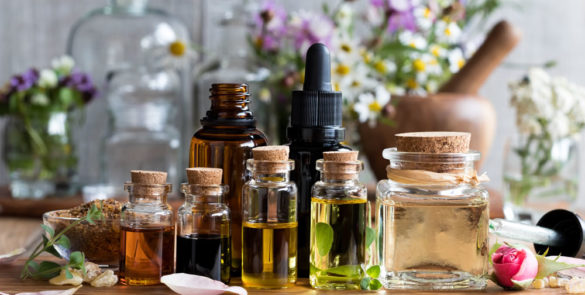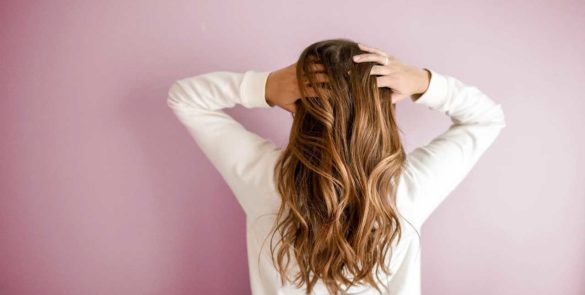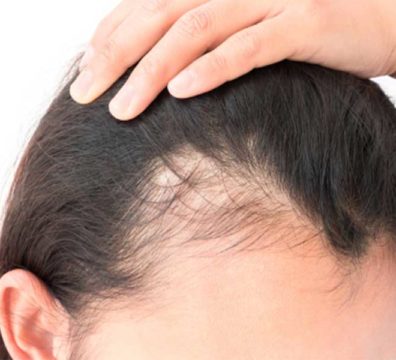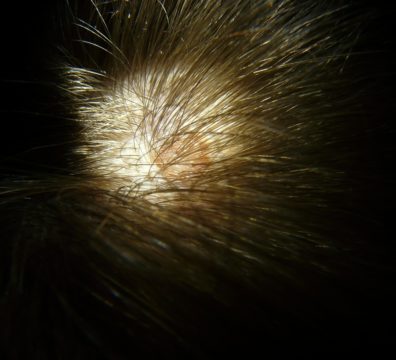Not so long ago, essential oils were known to pharmacists, perfumers and some practitioners of natural medicine, and here in less than 20 years, they have become essential.
They are real active therapeutic and / or cosmetic. Their effects are varied, but some “flagship” activities are highlighted, with real pharmacological properties.
Essential oils have multiple properties, some of which are particularly distinguished for the care and treatment of hair and scalp.
According to the different categories, they can be antiseptic, antimicrobial, fluidifying, anti-inflammatory, circulatory, muscle relaxant, relaxing, stimulating and repulsive.

The scalp is the big forgotten hair care. Yet stimulating care is recommended in 2 to 3 week courses in spring and fall, when hair falls like leaves!
Various essential oils are known to stimulate the growth of hair or oppose their fall: rosemary, lavender, nard, cade, clary sage, ylang-ylang, etc.
Most unknown, the essential oil of bay St. Thomas (pimenta racemosa) is extracted from the leaves and twigs of a plant of the Caribbean. It promotes hair growth, reduces the appearance of dandruff, restores tone to fine and greasy hair. However, it is irritating, due to the presence of eugenol.
Experience has shown that the synergy of the components of essential oils can be further developed and several of them can be combined in the same remedy, based on the complementary properties.
For example, the following combinations can be made diluted in 50 ml of jojoba oil :
- Oily hair : Bergamot (14 gates) – Eucalyptus radiata (14 gates) – Noble laurel (14 gtes)
- Dry hair : Ho wood (20 drops) – Fine lavender (10 drops) – Ylang-Ylang (10 drops)
- Normal hair: Atlas cedar (10 ha) – fine lavender (10 ha) – Lemongrass (10 ha)
- Hair Loss: St-Thomas Bay (20 gtes) – Cineol Rosemary (10 g) – Atlas Cedar (10 gtes)
It is best to apply essential oils with some general precautions, which are valid for cosmetics, skin care, oral intake and even air diffusion.
They are very concentrated and never used pure (with rare exceptions). They will be diluted in a cream, a vegetable oil or a gel. We will avoid their use in pregnancy and breastfeeding, in children under 5, in fragile people (elderly people, people with chronic diseases such as liver, kidney or cardiovascular insufficiency, asthmatics, etc.).
In addition, if you are subject to skin allergies, it is advisable to do a skin tolerance test before using a new essential oil.

Not only does the scalp massage promote blood flow, as well as provide nutrients to the follicles, which helps hair growth and strengthen the roots, but in addition, some studies have shown that this type of massage can increase the production of endorphins and serotonins, which helps reduce stress and improve your mood!
- Make yourself comfortable in a quiet place with soft relaxing music;
- Put in your palms your synergy of massage oil corresponding to your type of hair;
- Shake your hands and arms while doing some “inhaling / exhaling” to release the tension;
- Smooth fingertips but close your scalp
- Do the same again with firm points
- Put a good amount of your massage oil in your hands and put it in your hair while having your fingertips at the base of your scalp, from front to back of the skull, move continuously;
- Chase with the massage of your neck with one hand.
- Repeat each step as many times as necessary, at least 3 times.
- Finish with your arms in free position with inhalation / expiration cycles.
Want to go further in the knowledge of the usefulness and use of essential oils in hair care and scalp, we invite you to consult our dates of aromatherapy workshops.



